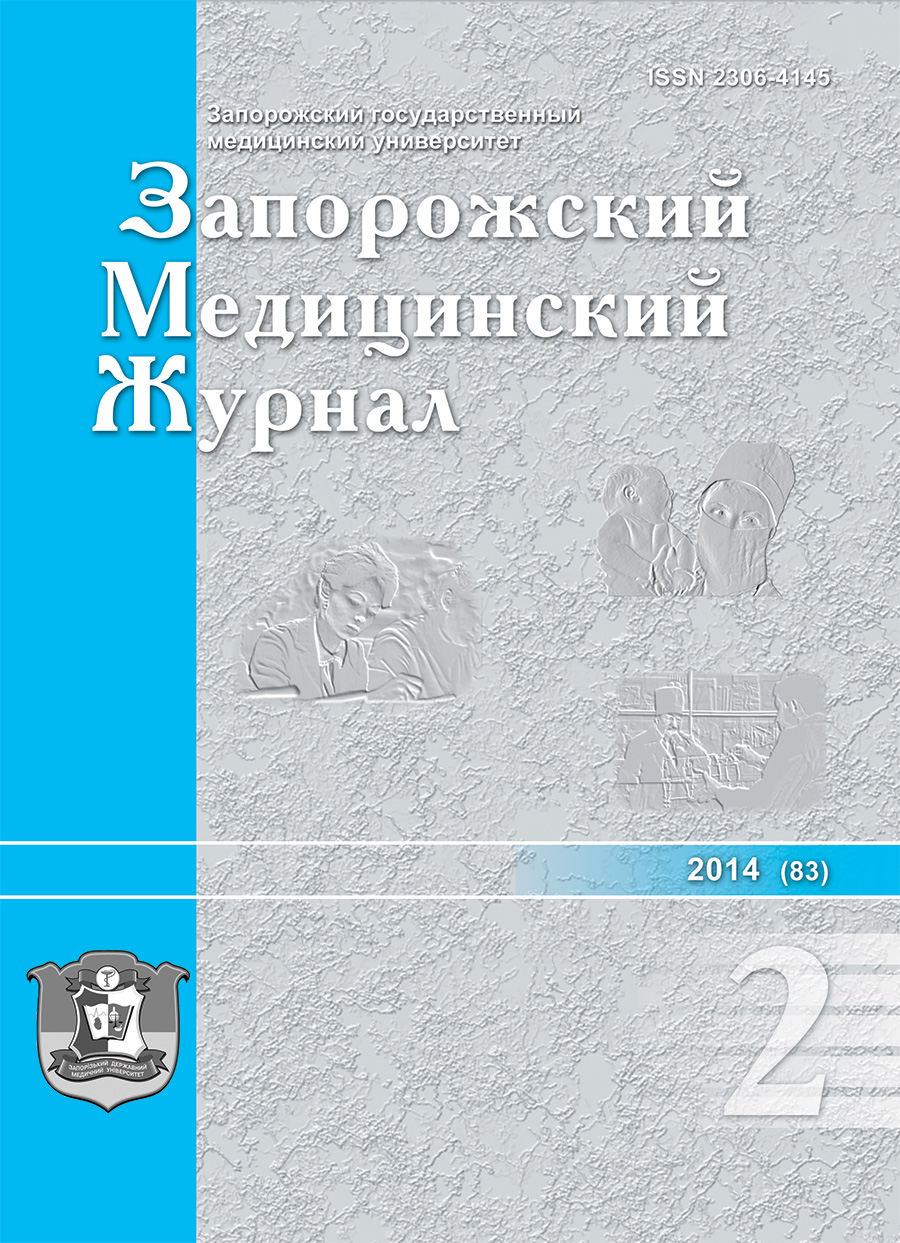Improving the conditions of regional hemodinamics of the eyes as a method of treatment in optic neuropathy at short-sightedness of high degree.
DOI:
https://doi.org/10.14739/2310-1210.2014.2.25423Keywords:
, high myopia, optic neuropathy, indirect revascularizationAbstract
The aim of research. To increase treatment efficacy in optic neuropathy with high myopia by performing revascularization operations in order to improve the performance of regional hemodynamics of the eyeball and improve of visual functions.
Materials and methods. The study involved 56 patients (78 eyes) with high myopia in age from 18 to 36 years, 32 were men (57.1% ), 24 - women (42.9% ). All patients underwent standard ophthalmologic examination, had nonprogressive form of myopia with signs of optic neuropathy .
Exclusion criteria were : myopia more than 6.0 diopters , progressive form of the disease , opaque optical surroundings, clinically significant comorbidity (glaucoma, diabetes, etc.).
Study group comprised 28 patients (32 eyes). Complex of medications included vasodilators, nootropics and neuroprotective agents , vitamins. Compression bandaging of the superficial temporal artery was used with revascularization purpose.
The control group consisted of 28 patients (46 eyes) who received a similar course of drug therapy.
Examination of patients in both groups were performed before treatment and after 1, 6 and 12 months.
Results. In the main group positive changes in visual acuity and visual fields was more pronounced and more cases of negative dynamics during the observation period were recorded. Patients in the control group in most cases achieved stabilization of the process, there was a negative trend of visual function during long-term follow-up.
Analyzing the performance of retinal tomography HRT II for the reporting period in the study group noted the absence of further thinning of the nerve fibers. In the control group had a negative trend 8 eyes ( 17.39 %) having an average thickness loss of retinal nerve fibers was 0,007 ±0,00046 mm( 7.12 % of the initial level) .
Prior to treatment the linear velocity of blood flow was reduced and averaged speed was 28,77 ±4,12 cm/ sec , and the resistance index increased (averaged 0,9 ± 0,08). Significant increase in the rate of blood circulation in the ophthalmic artery occurred in the study group patients who underwent surgery indirect revascularization and long-term follow averaged 10.09 % of baseline (control - 4.01% ) .
Assessing the functional activity of the peripheral parts of the retina , the data to increase sensitivity threshold for phosphenes to 78,54 ± 5,42 mA in the main group and 76,42 ± 3,25 mA in the control prior to treatment. In the main group managed to reduce this figure by 14% in the control group - 10%.
Analysis of the results showed positive dynamics in the study group relative to the control suggests that the conduct of the superficial temporal artery ligation for the purpose of indirect revascularization in high myopia with signs of optic neuropathy improves visual function and microcirculation with general hemodynamic eyeball helps to stabilize nerve thickness.
Conclusion. 1. Performing the ligation of the superficial temporal artery for the purpose of indirect revascularization in optic neuropathy in patients with high myopia causes progressive reduction, stop the average thickness of retinal nerve fibers.
2 . Correction of eyeball hemodynamic in remote periods in the study group was improved in 78.4 % of cases and the absence of impairment was detected in 100% of cases, compared to 33.45 % and 13.36 % in the control group .
3 . Indirect revascularization performance with neuroprotective goal will improve the function of the optic nerve in 88.23 % of patients and in 35% of the primary control group , stabilize the process in 11.77 % of patients and 55 % control group.
References
Gorbatyuk T.L. Morfometrichni i funktsionalni pokaznyky sitkivky ta zorovogo nerva v diagnostitsi nabutoi miopii. Dis. dokt. med. nauk [Morphometric and functional performance of the retina and optic nerve in the diagnosis of acquired myopia. Dr. Diss.(Med. Sci.)]. Odessa, 2012. (In Ukr.).
Dolzhich R.R. [Quantitative estimates of parameters retinal fibers according to HRT in patients with myopia]. Sbornik nauch. rabot nauch- prakt. Konf. “HRT Klub Rossiya-2004” [Proceedings of the scientific – practical conference “HRT Russia Club-2004”]. Moscow, 2004, pp. 50-51. (In Russ.).
Mingazova E.N., Samoylov A.N., Shiller S.I. [The role of medical and social factors in the development of myopia]. Kazanskiy meditsinskiy zhurnal [Kazan Medical Journal]. 2012;93(6):958-961. (In Russ.).
Shchepetneva M.A., Kudelina N.Yu.[ Analysis of the incidence and risk factors of progressive myopia in children]. Sistemnyy analiz i upravleniye v biomeditsinskikh sistemakh [System analysis and control in biomedical systems]. 2007; 6(1):186-187.
Jonas J.B., Budde W.M. Optic nerve damage in highly myopic eyes with chronic open-angle glaucoma // Eur. J. Ophthalmol.- 2005.-Vol. 15.- No 1.-P. 41-47.
Sigal I.A., Flanagan J.G., Etier C.R. Factors influencing optic nerve head biomechanics // Invest. Ophthalmol. Vis. Sci. – 2005. – Vol. 46. – P. 4189-4199.
Downloads
How to Cite
Issue
Section
License
Authors who publish with this journal agree to the following terms:
Authors retain copyright and grant the journal right of first publication with the work simultaneously licensed under a Creative Commons Attribution License that allows others to share the work with an acknowledgement of the work's authorship and initial publication in this journal. 

